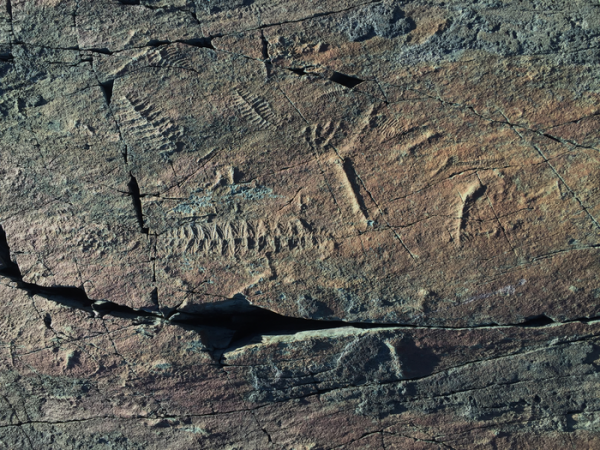NEWSWISE – Oxygen levels in Earth’s atmosphere likely “fluctuated wildly” a billion years ago, creating conditions that accelerated the development of early animals, according to new research.
Scientists believe atmospheric oxygen developed in three stages, known as the Great Oxidation Event, when oxygen first appeared in the atmosphere two billion years ago. During the Tertiary period, about 400 million years ago, atmospheric oxygen rose to present-day levels.
What happened during the second phase, known as the Neoproterozoic Era, which began about a billion years ago and lasted about 500 million years, is uncertain.
The question the scientists tried to answer was – was there anything unusual about the changes in oxygen levels during the Neoproterozoic period during the early evolution of animals – did oxygen levels rise suddenly or was there a gradual increase?
Fossilized traces of early animals – known as the Ediacaran biota, multicellular organisms that needed oxygen – were found in sedimentary rocks that are 541 to 635 million years old.
To answer the question, a team of researchers from the University of Leeds, supported by the Universities of Lyon, Exeter and UCL, used measurements of different forms of carbon, or carbon isotopes, found in limestone taken from the shallow sea. Based on the isotope ratios of the different types of carbon found, the researchers were able to estimate the amount of photosynthesis that existed millions of years ago and infer the amount of oxygen in the atmosphere.
As a result of the calculations, they were able to create a record of the amount of oxygen in the atmosphere over the last 1.5 billion years, which tells us how much oxygen would have spread into the ocean to support early marine life.
Dr Alex Krause, a biogeochemical modeller who completed his PhD at Leeds in the School of Earth and Environment, said the findings provide a new perspective on the way oxygen levels on Earth are changing.
He added: “Early Earth, for the first two billion years of its existence, was anoxic, with no atmospheric oxygen. Then oxygen levels began to rise, known as the Great Oxidation Event.
“Until now, scientists thought that after the Great Oxidation Event, oxygen levels dropped and then rose just before we saw the first animals evolve, or that oxygen levels were high millions of years before animals arrived.
“But our study shows that oxygen levels are very dynamic. Long before the earliest forms of life there was an oscillation between high and low levels of oxygen. We see periods when the marine environment in which early animals lived was rich in oxygen – and then periods when it was not.
Dr Benjamin Mills, who leads the Earth Evolution Modeling Group at Leeds and is overseeing the project, said: “This seasonal change in environmental conditions can cause evolutionary pressures, where some species go extinct and new ones emerge.”
Dr Mills said the oxygen-rich periods developed so-called “habitable spaces” – parts of the ocean where oxygen levels were high enough to support early life.
He said: “Ecological theory suggests that when you have a habitable space that expands and contracts, it can support rapid changes in the diversity of biological life.
“When oxygen levels decrease, there is severe environmental stress on some species that can lead to extinction. As oxygen-rich waters expand, the new space allows survivors to rise to ecological dominance.
“These expanded habitable spaces can last for millions of years, giving plenty of time for ecosystems to develop.”
Ends

Prone to fits of apathy. Unable to type with boxing gloves on. Internet advocate. Avid travel enthusiast. Entrepreneur. Music expert.



